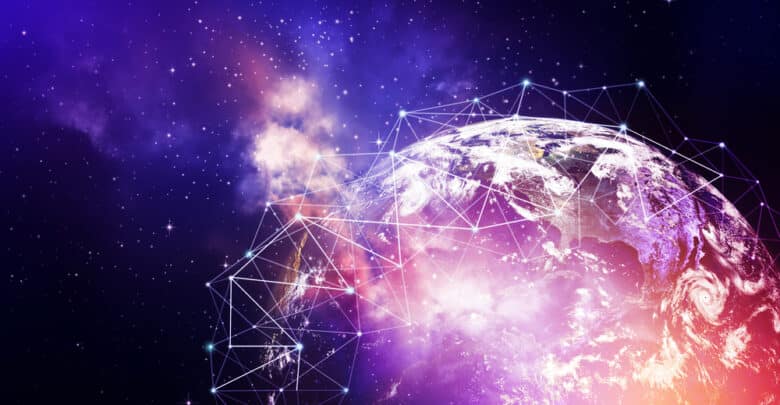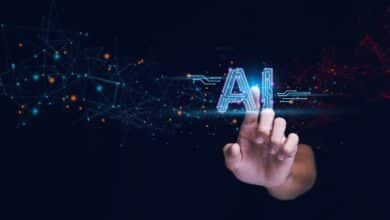
Have you ever entertained the possibility of the internet turning into a decentralized venture? Decentralization and blockchain technology has taken the world of finance by storm, and it is only the beginning. According to many crypto analysts and financial personalities out there, cryptocurrency is going to become a normal norm in the world of finance, and everyone in the future will be using it.
This begs the question of what would become of the Fiat money and the current monetary system, which is active throughout the globe? Would it be all disintegrated and deteriorated, or up-gradation to decentralized finance would commence?
According to the tune that is set out there, it seems that the Fiat currency would not get properly eradicated but would still continue to function in some capacity, but people would surely be coming to terms with decentralization and the use of cryptocurrencies. That simply goes for the world of finance but applies that to how we connect with each other and view content online; it is just marvelous. This is the very concept of web 3.0, which is a future version of the Internet that is entirely based on public blockchains, which is an incredibly popular system right now for the sake of commencing and facilitating crypto-oriented transactions.
Introduction to Web 3.0
To be able to understand the concept of web 3.0 in detail, a rather amusing picture needs to be painted in front of you so you can gather the very essence of the concept and why it is going to be such a revolution. The normal internet, as you go by it, works through a centralized source. Google, Facebook, or any other website out there is run by a centralized networking array that is stretched at present on multiple servers across the globe, working in unison to provide you access to all kinds of content that you stream through these search engines.
You need permission to be able to access content on the conventional web because of the fact that the whole thing is centralized and is governed by administrative bodies representing the full extension of the website or the services that you are using. With web 3.0, this whole thing gets reversed, as it is a completely decentralized and distributed set up it means that there is potentially no need to ask for permission for the sake of joining the network, and neither there is a screening process set up to decide who gets to access the services offered.
For the sake of online shopping on web 3.0, the whole system is incredibly revolutionized and maintained properly because there is no need for an intermediary to conduct transactions between two or more parties. Everything is automated, and that is what makes the concept of web 3.0 thrilling and more of a guarding angel to the very privacy of the users because nothing gets stored in the form of data or information from the users ever.
Web 3.0 is also given the name of the Semantic web or read-write execute, and it tackles the era that propagates with the future of the Web from 2010 and onwards. Web 3.0 is quite supportive of artificial intelligence and machine learning which allows computers to be able to better interpret data and stuff it in the form of different sections, which are more promptly available to a user according to their specific needs. The massive difference between Web 2.0 and Web 3.0 is decentralization; with web 3.0, developers would rarely be developing and deploying apps that would run on a single server or storing data inside a single database.
Web 2.0, on the other hand, propagates data into a single database and is managed by dedicated cloud providers. The apps for web 3.0 are developed on decentralized networks and blockchains and the whole data is being shared and distributed by the peer-to-peer nodes, which act as servers for the processing and sharing of data.
These programs are better known as decentralized apps, and it is quite the concept in the present day. Instead of people downloading or buying these apps to support the developers, these developers are rewarded via crypto tokens on the basis of delivering the finest quality service so that the essence of security and stability for a decentralized network remains intact.
Significance of Web 3.0 in the Crypto World
Web 3.0 and crypto are like wheels of the same motor; you can’t have the drive unless both are planted in their fixed positions and given a whirl. This is because many protocols of web 3.0 are heavily correlated with that of cryptocurrencies. Web 3.0 acts the same as a blockchain for a dedicated cryptocurrency as it needs volunteers and people who are interested in contributing and improving the security of the network the same way as verifying and validating transactions for a dedicated cryptocurrency.
Web 3.0 also provides these contributors with incentives in the form of tokens for taking part in securing the network in whatever capacity they did. You might find a lot of protocols interconnected with web 3.0, such as bandwidth, storage, computation, hosting as well as identification. You will see that some of these services were provided by cloud providers, and in many remote areas of the world, these still are.
Web 3.0 is still a concept, and it has not been implemented in the real world or in an extensive form. Livepeer is a protocol that is based on Ethereum, and it does provide video infrastructure providers with of proper place to set up their operation and a bunch of streaming applications that will help them develop their videos and get them out there.
Helium, on the other hand, is also using the same approach of incentivizing small businesses and people who would supply wireless coverage to others and then sending the diagnostic data back to helium via blockchains and tokens. It is kind of renting out your Internet to others and getting paid for it.
There are multiple protocols out there, and each one incentivizes the participants one way or the other. With centralized Internet, consumers have to pay for the sake of availing a service but bring web 3.0 into the equation, and consumers will be paid for tasks they perform to keep the security and integrity of the decentralized internet intact.
Not to mention with web 3.0, we’ll have to heavily rely on the use of non-fungible tokens, cryptocurrencies, and other various blockchain entities. Reddit, which is an extremely popular social media platform out there, is now bringing back 3.0 and its very concept into action by incentivizing people to control various pieces of communities present on the forum in which they participate and which these represent.
Every user would be able to earn community points which they would get by posting into a specific community or answering questions of the people. The intensity of these points would solely rely on how other users upvote or downvote their particular post. This is just a single use of web 3.0 and its execution in a corporate world.
Essential Properties of Web 3.0
Web 3.0 is the latest concept out there in terms of execution of how content is displayed and reaches people out there but also which parties are being benefited and in what capacity. It is a gradual move from Web 2.0 to 3.0, and it is happening extremely slowly, almost unnoticed by the general public. You might argue that web 3.0 applications look and feel the same as these would come with the 2.0, but one thing is extremely different, the back end is fundamentally changed and revolutionized.
The development of universal applications has now begun with the concept of web 3.0, which means that multiple operating systems out there had to develop individual applications so this could become compatible and run on their platform. Now a single application would get developed, and it could be utilized by a wide variety of devices and multiple software kinds out there, making it all extremely convenient and approachable by the end-user. Web 2.0 still heavily relies on the use of surveillance and exploitation of people’s data via extensive advertising, but that is about to be changed by bringing the concept of Web 3.0 and decentralization into the mix.
There will be more transparency, the data of the users will remain secure and intact, and furthermore, these will be the users who got incentivized and are benefited on the platform and not the companies and corporations who have done nothing but to centralize the whole Internet to have their own control over things. Individuals will be in charge of their own data without having it exploited and or being taken forcefully by the so-called tech companies and corporations.
Following are some of the more featured entanglements of Web 3.0 to better understand its complexities and functions;
Semantic Web
Semantic Web refers to a web of data that is too dense and articulate, and only machines with the prospect of machine learning are able to better understand or interpret it. Semantics is relevant to the meaning or the emotion of the word or a phenomenon that is being expressed through facts. It is possible for two phrases to mean the same but to be different in execution or in the written word. The emotions might be the same in two dedicated statements, but the way these are written or interpreted by machines or computers might be slightly different.
The two most significant cornerstones of web 3.0 are artificial intelligence and the semantic web. The semantic web will be of great help in teaching the computer and high-end machines to understand what the data actually means; the prospect of simply interpreting the data has been extended into understanding it better and analyzing a deeper meaning that it has. It would allow artificial intelligence to be employed in real-world use cases where it is able to make better use of the data available.
With the help of search and analysis, a spider web of knowledge throughout the internet could be created, which is primarily based on the knowledge of different things, expressions, and relative phenomena out there. This way, the very experience of the user with the valuable services will reach a new level of connectivity, taking a dive into all this data that has been made accessible.
3D Graphics and Mechanics
Think of web 3.0 as a transformation of the two-dimensional web, which was 2.0 into a more realistic three-dimensional design that can be termed as the cyber world. Therefore the services which would be made available on web 3.0, such as e-commerce and online games, would have a three-dimensional design and a concise touch to them.
It might sound a little strange at first, but with the advancement in machine learning and artificial intelligence, it is possible for high-end computing machines to develop a 3-dimensional construct of almost anything to provide a real-time experience to the user, much like in virtual reality but it could be something that the users will be able to interact with at the next possible level.
The present form of this concept is not that intimate and is still undergoing tons of development, but it is possible that it would be made available to the end-user as soon as it is finished. We are not looking at decades here but only a few years before this concept actually gets out there and is available to the end-user in all its fineness.
AI and Machine Learning
Web 2.0 is already making strides with artificial intelligence and incorporating machine learning into their functions where data is interpreted in real-time, insights are drawn, and executions are done based on the insights to make the user experience better and bolder. Consider the simplest of Internet experiences; while on social media, you begin to like something, share it, and comment on it up to the point that it has been shared with too many people, that post or specific thing becomes an overnight sensation, why?
Have you ever given it any thought? This is because as many people are interacting with a single post, the machine learning systems behind the curtains think that it must be an extremely important one, so it starts appearing in the newsfeed of other users and random people. Web 3.0 is determined to take this thing all the way home; it means that the computer will not only be able to process the data but will also be able to learn from it and associate emotions and or attributes to it.
Human intervention might become a necessity in this case because, at the end of the day, computers can only perform so much, but they require human insight. With that being provided to these machine learning and artificial intelligence capable systems, they would be able to distinguish between good and bad data.
Ubiquitous
This refers to the concept of being present in multiple places at the same time, such as water is ubiquitous in all parts of the world. This is the kind of feature which is already available and is rocking. With Web 2.0, think of social media as a platform where you can share your photos or videos, and as soon as you share them, your intellectual property is being shared with a plethora of people out there, and it becomes ubiquitous and available everywhere.
With the availability of the Internet reaching almost every nook and corner of the world and mobile devices becoming more accessible and fluent, web 3.0 and its potential experience will be in the grasp of everyone across the globe. With web 1.0, the concept of the Internet and connecting with other people was only limited to desktop computers, Web 2.0 pushed the limits and made it accessible on a smartphone, but web 3.0 is going to stretch it to its absolute limits and is going to make it available anywhere and everywhere.
Think of all the boundaries you ever knew surrounding yourself gone in a blink of an eye and the doors for multiple opportunities opening one after to the other in front of you so you can take full advantage of what they have to offer today. This is what web 3.0 is all about, developing opportunities and making them accessible to people.
Also, in doing so, web 3.0 is going to remove any and all limitations imposed by a standard design of corporations and companies taking advantage of people and their hard work without incentivizing them in any potential way. Web 3.0 is going to be all about people, from people and for people. The dimensions and settings of web 3.0 are being laid out slowly and gradually, and it might still require some time before it is widely made available out there, but the potential is there, and hopefully, it is going to revolutionize the way we interact with information and the accessibility of the Internet.
Tokenhell produces content exposure for over 5,000 crypto companies and you can be one of them too! Contact at info@tokenhell.com if you have any questions. Cryptocurrencies are highly volatile, conduct your own research before making any investment decisions. Some of the posts on this website are guest posts or paid posts that are not written by Tokenhell authors (namely Crypto Cable , Sponsored Articles and Press Release content) and the views expressed in these types of posts do not reflect the views of this website. Tokenhell is not responsible for the content, accuracy, quality, advertising, products or any other content or banners (ad space) posted on the site. Read full terms and conditions / disclaimer.







